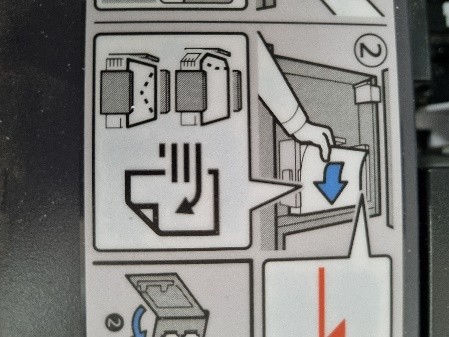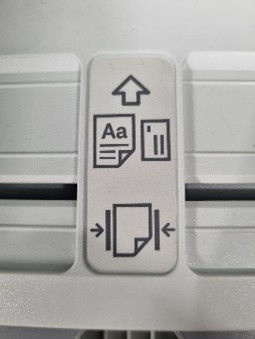DYK? - Paper has a "print-first" side?
- Steve Connelly

- Jul 22
- 3 min read
Did You Know - Paper has a “Print-First” Side
When you grab a ream of copy paper, do you ever stop to think about the subtle details that can make a big difference in your printing experience? One of the lesser-known facts about copy paper is that it often has a designated "print first" side. This may seem trivial but understanding it can lead to more efficient printing and less frustrated people, SAVING you Money and Time. Here’s what you need to know!
What Does "Print First" Mean?
Most copy and print papers are designed with a specific side that’s optimized for printing on first. This is due mainly to the manufacturing process, and if used correctly means the paper will curl less when printed through a laser print device and therefore reducing the likelihood of constant paper jams. This is particular true in larger high volume print devices, because when you get a paper jam, it may jam paper in the device in 5 or 6 locations, that would have to be cleared and disposed of.
How Can You Identify the "Print First" Side?
Most manufacturers do provide guidance, but here are a few tips:
Check the Packaging: Some reams of paper will indicate on the packaging which side is the best for printing. Look for any symbols or instructions. For example - Look for an arrow pointing up or the words “copy this side first.”
Seam of Paper Packaging: It is universal now that the seam side of the Paper packaging is the print First side.
How do I load my printer with the "Print First" Side correctly?
When you pull out the paper tray or open the multipurpose (MP) feeder tray on print device there will be images to indicate which side is printed first and in which direction the paper is fed from the paper tray. Below are a couple of images that you might see in your printer paper tray.


In IMAGE A the print first side will be facing down (as the lines indicating the printing are on the underneath side of the folded-up corner of the paper), and the feed direction is towards the top of the image.
In IMAGE B the print first side will be facing up (The lines indicating printing on face-up side of paper) and the print direction is indicated by the Blue arrow.

In IMAGE C the print first side will be facing up (The lines indicating printing on face-up side of paper) and the print direction is indicated by the Black outline arrow towards the top of the image.
N.B. There is another image of an Envelope and printing on the face-up side, so this is an image from a Multipurpose Tray feeder.
BONUS TIP – Why do I get more paper jams in winter?
We often get more calls about paper jams in printers and Copiers in the colder winter months or when there is a lot of rain around. WHY I hear you ponder?
The reason again is due to how paper is made and how it will draw in moisture from the surrounding air, even through brick walls and concrete floors. More moisture in the paper makes the paper firstly stick together more easily, and secondly makes the paper curls more in the printer, therefore creating more paper jams.
How to help in these times.
Keep paper in the paper wrapping until loaded in the printer, which helps prevent the paper itself drawing in the moisture. Keep your wrapped paper in cupboards not out in the open, and don’t stack paper or paper boxes directly on concrete floors or against brick walls. Add a barrier, like a pallet or plank of wood underneath the box of paper, leave a gap between the paper and the brick wall.
In Conclusion
Next time you reach for that stack of copy paper, remember that not all sides are created equal! Knowing which side to use can enhance your printing experience and save you time and resources. So, the next time someone asks, “Did you know?” you’ll be ready to share this handy tip about the often-overlooked features of copy and print paper!
Happy printing!
Connelly's Office National - Empowering people in local buisinesses to drive prosperity in our regional communities.






Comments